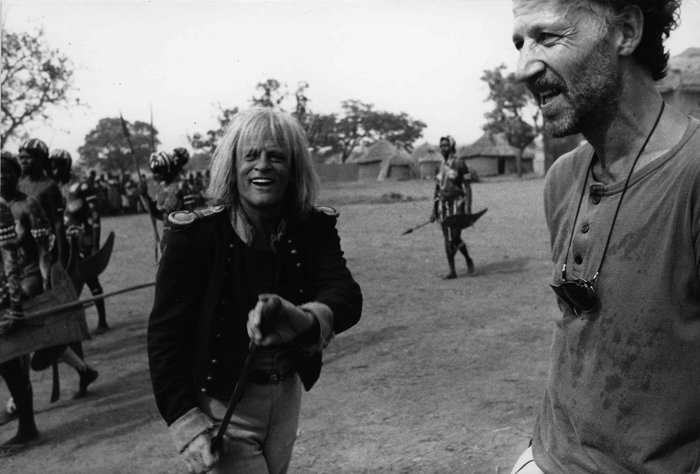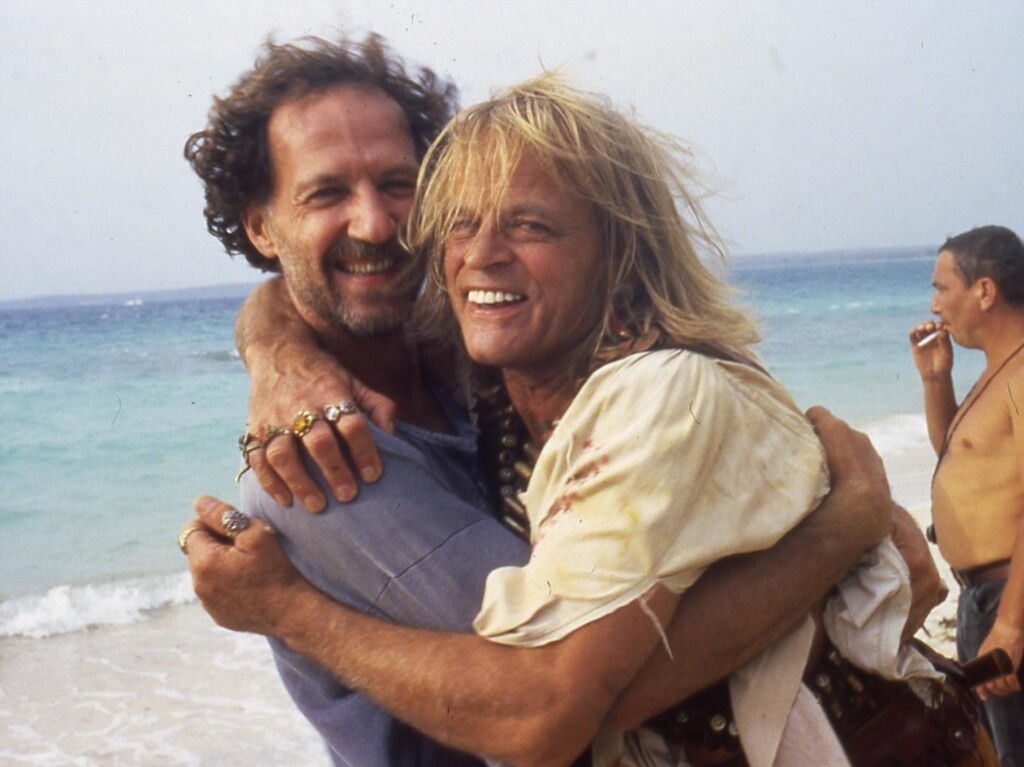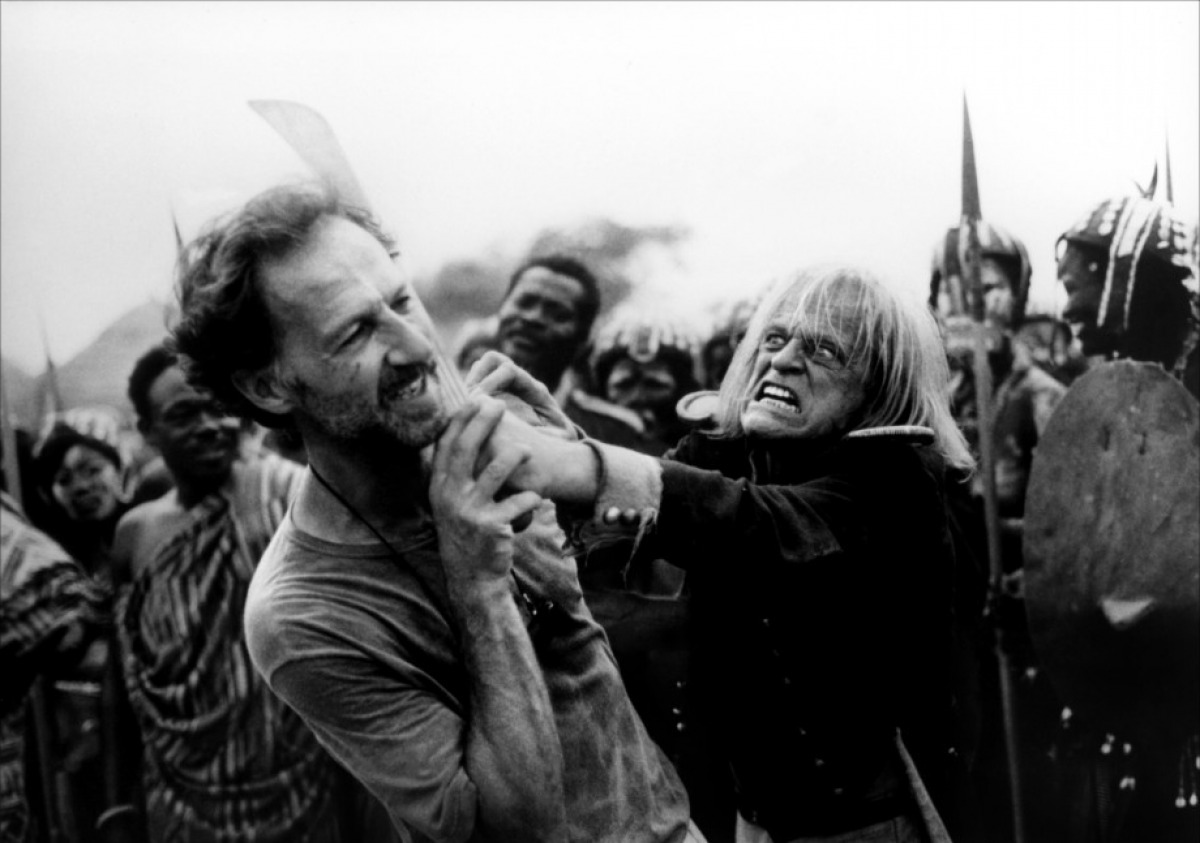Unpacking What Was The Relationship Between Werner Herzog And Klaus Kinski?
Detail Author:
- Name : Ashtyn Renner
- Username : vmaggio
- Email : dawson76@hotmail.com
- Birthdate : 1989-06-04
- Address : 629 Keeling Circles Suite 940 Port Clementine, MN 82545
- Phone : +1 (352) 625-0361
- Company : Considine-Corkery
- Job : Securities Sales Agent
- Bio : Ut ut delectus officiis et voluptatum repellendus. Aspernatur enim facilis consequatur praesentium voluptatem in. Quidem sunt qui assumenda eos omnis earum.
Socials
twitter:
- url : https://twitter.com/kaia_xx
- username : kaia_xx
- bio : Qui temporibus molestiae quibusdam amet id fugit id. Rem ut dignissimos aliquid repellendus delectus. Cupiditate rem minus ipsa quas rerum laboriosam.
- followers : 3890
- following : 2160
facebook:
- url : https://facebook.com/kaia_cummings
- username : kaia_cummings
- bio : Voluptatem est qui cupiditate. Dignissimos rerum explicabo qui deleniti.
- followers : 4110
- following : 2213
linkedin:
- url : https://linkedin.com/in/kaiacummings
- username : kaiacummings
- bio : Earum natus ea est.
- followers : 156
- following : 2594
The connection between director Werner Herzog and actor Klaus Kinski remains, to this day, one of cinema's most talked-about and, frankly, baffling partnerships. It was a bond forged in fire, a creative explosion that gave us some truly unforgettable films, yet it was also marked by intense conflict and deep, personal struggle. You see, this was a working relationship that, in some respects, defied easy explanation, going far beyond what most people would consider a typical professional arrangement.
For those who have seen their work together, the sheer force of their combined personalities on screen is, well, just undeniable. Kinski, with his wild eyes and unpredictable spirit, seemed to perfectly embody the extreme characters Herzog often dreamed up. And Herzog, for his part, possessed the steely resolve and singular vision needed to direct such a powerful, sometimes even dangerous, talent. It was a dance between two very different, yet oddly similar, creative souls, so it was.
Many folks might wonder, "What was the relationship between Werner Herzog and Klaus Kinski, really?" Was it friendship? Was it a power struggle? Was it, in a way, a kind of artistic obsession? This article aims to pull back the curtain a bit on this famous, often misunderstood, pairing. It wasn't about using each other as some sort of validation tool, or like an accessory to show off; their connection ran much deeper than that, more like a raw, almost primal, need to create something extraordinary together, even if it meant pushing each other to the very edge.
Table of Contents
- Werner Herzog: A Visionary Director
- Personal Details and Bio Data
- Klaus Kinski: The Enigmatic Actor
- Personal Details and Bio Data
- A Fateful Meeting: The Beginning of a Storm
- The Films: A Creative Cauldron
- Aguirre, the Wrath of God
- Nosferatu the Vampyre
- Woyzeck
- Fitzcarraldo
- Cobra Verde
- Clashes and Confrontations: The Volatile Core
- Mutual Dependence: A Strange Symbiosis
- The Legacy: Enduring Art from Turmoil
- Frequently Asked Questions (FAQs)
Werner Herzog: A Visionary Director
Werner Herzog, born Werner H. Stipetić, is a German film director, screenwriter, producer, and sometimes even an actor. He is known for his distinct style, which often explores themes of human endurance, the natural world, and the thin line between madness and genius. He has, for instance, a very unique way of telling stories, often blurring the lines between what is real and what is imagined in his films. His approach to filmmaking is, in some respects, quite unlike anyone else's.
He has directed over sixty feature films and documentaries, and has also written more than fifty books. Herzog's films frequently feature characters with grand, almost impossible, dreams. He often puts his actors and crew in extremely remote or challenging locations, pushing the limits of what is possible to capture a certain feeling or image. This dedication, you know, is a big part of his reputation.
Personal Details and Bio Data
| Detail | Information |
|---|---|
| Full Name | Werner H. Stipetić |
| Born | September 5, 1942 |
| Birthplace | Munich, Germany |
| Occupation | Film Director, Screenwriter, Producer, Actor |
| Notable Works | Aguirre, the Wrath of God, Fitzcarraldo, Grizzly Man |
| Style | Often explores human endurance, nature, obsession |
Klaus Kinski: The Enigmatic Actor
Klaus Kinski, born Klaus Günter Karl Nakszynski, was a German actor known for his intense, often explosive, performances. He had a screen presence that was, quite literally, electrifying, capable of conveying deep emotion or sudden rage with just a look. His acting style was, in a way, raw and completely unrestrained, which made him a compelling figure to watch.
Before his famous work with Herzog, Kinski had already built a long career, appearing in over 130 films. He was known for playing disturbed, volatile, or villainous characters, a typecasting that, well, suited his natural temperament. His personal life was, by many accounts, as turbulent and unpredictable as his on-screen roles, so it was.
Personal Details and Bio Data
| Detail | Information |
|---|---|
| Full Name | Klaus Günter Karl Nakszynski |
| Born | October 18, 1926 |
| Birthplace | Sopot, Free City of Danzig (now Poland) |
| Died | November 23, 1991 (aged 65) |
| Occupation | Actor |
| Notable Works | Aguirre, the Wrath of God, Fitzcarraldo, Nosferatu the Vampyre |
| Known For | Intense, unpredictable performances |
A Fateful Meeting: The Beginning of a Storm
The story of Werner Herzog and Klaus Kinski really began when Herzog was just a boy, maybe 13 years old. Kinski was living in the same apartment building in Munich, and Herzog recalled seeing him for the first time. He described Kinski as a force of nature, someone who was, quite frankly, unlike anyone else he had ever encountered. This early impression, you know, set the stage for their future.
Their first film together was "Aguirre, the Wrath of God" in 1972. Herzog had envisioned Kinski for the lead role of the mad conquistador, and he knew, deep down, that only Kinski could bring that character to life. Getting Kinski to agree was, apparently, a challenge in itself, but Herzog's persistence, a trait he is very well known for, won out in the end. It was, in a way, the start of something truly unique.
The conditions on set for "Aguirre" were incredibly tough, deep in the Amazon jungle. This environment, you see, seemed to amplify Kinski's already volatile nature. There were screaming matches, threats, and moments of sheer, raw tension that would become the stuff of legend. Herzog, however, held his ground, even famously threatening Kinski with a gun to keep him from abandoning the film. This kind of interaction, honestly, became a hallmark of their work together.
The Films: A Creative Cauldron
Over the course of 15 years, Werner Herzog and Klaus Kinski made five feature films together. Each project was, in some respects, a battle of wills, but also a testament to their shared artistic drive. The movies they created are often considered masterpieces of world cinema, showcasing Kinski's powerful acting and Herzog's singular vision. They are, quite simply, very much worth watching.
Aguirre, the Wrath of God (1972)
This was their first collaboration, setting the tone for everything that followed. Kinski plays Don Lope de Aguirre, a deranged conquistador leading his men on a doomed search for El Dorado. The film's production was, by all accounts, brutal, reflecting the madness on screen. It really captures a sense of obsession, you know, that feels very real.
Nosferatu the Vampyre (1979)
Herzog's take on the classic Dracula story saw Kinski as Count Dracula, bringing a sense of profound sadness and loneliness to the role. This film was, in a way, less about the outright confrontations and more about a shared, eerie mood. Kinski's portrayal is, frankly, unforgettable, giving the vampire a truly melancholic presence.
Woyzeck (1979)
Released in the same year as "Nosferatu," this film is an adaptation of Georg Büchner's play. Kinski plays the titular character, a poor soldier driven to madness by society. It's a powerful and tragic performance, showing Kinski's range beyond just the wild-eyed roles. The quiet despair he brings to Woyzeck is, well, quite striking.
Fitzcarraldo (1982)
Perhaps their most famous and challenging collaboration, "Fitzcarraldo" tells the story of an opera enthusiast who wants to build an opera house in the Amazon. The film's production was, quite literally, epic, involving a real steamboat being pulled over a mountain. Kinski's performance as the obsessed Fitzcarraldo is, in some respects, a mirror to the production itself, reflecting a kind of beautiful madness. This film, you know, really tested everyone involved.
Cobra Verde (1987)
Their final film together saw Kinski as a slave trader in Brazil. While it features Kinski's characteristic intensity, the production was reportedly even more strained than previous ones. By this point, their relationship had, apparently, reached its breaking point. It was, in a way, a very fitting, though perhaps sad, end to their working partnership.
Clashes and Confrontations: The Volatile Core
The relationship between Herzog and Kinski was, as many accounts suggest, a constant dance of arguments, threats, and reconciliations. It was a connection that, to be honest, often seemed to thrive on conflict. Kinski's unpredictable outbursts were legendary; he would scream at Herzog, at the crew, and sometimes even at himself. Herzog, for his part, often met Kinski's rage with a calm, unyielding resolve, which, well, probably fueled Kinski even more.
One famous story from the "Fitzcarraldo" set involves Kinski threatening to leave the production. Herzog, apparently, told him he would shoot him if he tried to go, and then turn the gun on himself. This anecdote, whether entirely literal or a dramatic retelling, captures the extreme nature of their bond. It shows, in a way, the lengths they would go to, both to create and to destroy, during their time together. It was, quite simply, a very intense situation.
These confrontations were not just personal spats; they were, in some respects, integral to their creative process. The tension between them often translated directly into the raw energy seen on screen. Herzog believed that Kinski's madness was, you know, a necessary ingredient for the characters he wanted to portray. It was a relationship that, frankly, made her look bad, or anyone caught in the middle, but it also produced art that still holds up today.
Mutual Dependence: A Strange Symbiosis
Despite the constant turmoil, there was a deep, almost undeniable, mutual dependence between Herzog and Kinski. Herzog needed Kinski's unique, explosive talent to bring his singular visions to life. Kinski, in turn, needed Herzog's unwavering belief in him, and his ability to channel Kinski's chaotic energy into something truly artistic. It was, to be honest, a very strange kind of symbiosis.
Herzog often spoke of Kinski as his "best fiend," a phrase that perfectly captures the contradictory nature of their bond. It wasn't a conventional friendship, nor was it simply a professional arrangement. It was, in a way, something much more profound and, frankly, disturbing. Their connection was not about superficial validation, but about a shared artistic drive that pushed them both to their limits. This kind of bond, you know, is pretty rare.
They both seemed to understand, deep down, that they could achieve something extraordinary together that neither could accomplish alone. Kinski's wildness found a container in Herzog's strict direction, and Herzog's dreams found a vessel in Kinski's electrifying performances. This dynamic, you see, was a kind of perversion of a normal working relationship, but one that somehow worked for them, producing some truly powerful cinema. It was, basically, a relationship built on a very unique understanding.
The Legacy: Enduring Art from Turmoil
Klaus Kinski passed away in 1991, and Werner Herzog later made a documentary about their relationship called "My Best Fiend" (1999). This film offers Herzog's own reflections on their time together, providing a very personal look at their volatile history. It helps, in a way, to clarify some of the pervasive confusion around their relationship, offering insights from the man who lived it.
The films they made together continue to be studied and admired by filmmakers and film lovers around the world. They stand as a testament to the idea that sometimes, the most challenging and unconventional partnerships can lead to the most groundbreaking art. Their story, honestly, shows that creation can come from chaos, and that genius sometimes walks hand-in-hand with madness. You can learn more about their creative work and the famous documentary that details their bond.
Even now, in June 2024, discussions about Werner Herzog and Klaus Kinski pop up on forums and in film circles. People are still fascinated by their dynamic, trying to piece together what made it so powerful, and so destructive. Their bond, you know, continues to spark conversation, proving that their legacy is very much alive. It reminds us, too, that some creative relationships are just a bit beyond ordinary understanding. You can learn more about unique collaborations on our site, and also check out this page for more insights into film history.
Frequently Asked Questions (FAQs)
What was the relationship between Werner Herzog and Klaus Kinski?
The relationship between Werner Herzog and Klaus Kinski was a deeply intense, often tumultuous, and creatively fruitful partnership. It was marked by extreme arguments and mutual dependency, where Herzog's vision met Kinski's volatile genius, resulting in five highly acclaimed films. It was, honestly, a very unique bond that went beyond typical professional ties.
Did Werner Herzog and Klaus Kinski hate each other?
While their relationship was filled with intense conflict and verbal abuse, it was not simply one of hatred. Herzog often spoke of a deep respect, and even a strange form of love, for Kinski's talent. Kinski, for his part, often returned to work with Herzog despite the difficulties. It was, in a way, a complex mix of admiration and animosity, rather than pure hatred.
How many films did Werner Herzog and Klaus Kinski make together?
Werner Herzog and Klaus Kinski collaborated on five feature films. These include "Aguirre, the Wrath of God" (1972), "Nosferatu the Vampyre" (1979), "Woyzeck" (1979), "Fitzcarraldo" (1982), and "Cobra Verde" (1987). Each film, you know, pushed the boundaries of their creative partnership.


